After spending some time looking at stuff other than trains, we are now going back to trains, this time the Ma On Shan Line. The railway line is a 11 kilometre long branch line, with nine stations linking the new town of Ma On Shan with the main East Rail line at Tai Wai. The majority of the track and stations are elevated on viaducts so that they can weaving between apartment blocks: the only exception is a short stretch of track running down the middle of a freeway. The full set of photos is here.
I’ll start at the very end of the line. I mentioned the terminus station of the Ma On Shan Line in an earlier post – Wu Kai Sha is located on the edge of suburbia, and only a short walk from the beach.
The terminus has an island platform with the tracks ending in a dead end overrun, a scissors crossover is located just past the arrival / departure end to get trains back onto the correct tracks.
Upon leaving the station, the train is on viaduct, with little development on the north side of the line.
Only a moment or two later the train arrives into a forest of apartment towers, as the Ma On Shan town centre is reached.
By this point the viaduct has risen in height, allowing for an elevated station.
At Ma On Shan station ground level is open to traffic, the middle level is the station concourse, and the top level is the platforms. The station is linked by overhead footbridges to the shopping centres on either side of the road. This photo from Wikipedia shows it better:
Platform level at Ma On Shan looks like the majority of stations on the line: being an island platform, a full length roof over the top, a noise wall facing the outside world, no platform screen doors or gates, and trains running on the right hand side. The reversal of train operation compared to the rest of the MTR network is to enable a cross platform interchange to be provided with the East Rail line at Tai Wai station.
Four car long trains are used on the line, being of the ‘SP1900’ type and built by a Japanese joint consortium of ITOCHU, Kinki Sharyo and Kawasaki Heavy Industries. The same design of train is used on the former KCR East Rail and West Rail lines.
The entire train is provided with longitudinal seating, and each carriage having five doors per side.
After Ma On Shan the viaduct continues, still surrounded by apartment blocks.
The design of the viaduct permits evacuation of trains along the walkway either side of the train, in effect turning it into one very long platform. To make the railway quieter for local residents, the viaduct walls reach window level of the trains, muffling the noise produced by train wheels rolling along the rails.
To further reduce noise levels, sound dampening baffles line the inside of the viaduct, as well as either side of each running rail.
To reduce transmission of vibration into the viaduct structure, rubber ‘boots’ are used in the attachment of the rail to the concrete slab. The slabs themselves are isolated from the viaduct proper by more vibration dampeners.
The final type of sound deadening is noise walls enclosing the viaduct at critical spots. The majority of these tunnels are located at crossovers, to catch the noise made when trains bash their way over the pointwork.
The need for the railway to be quiet is apparent when you see just how many people live nearby: as you can see here the viaduct is dwarfed by apartment towers.
The next two stations are Heng On and Tai Shui Hang: both are of a simpler design, with a concourse at ground level and the railway on the viaduct above. Pedestrian access is via a subway under the parallel road.
After Tai Shui Hang the line descends to ground level, running in the middle of the Tate’s Cairn Highway.
Again, concrete walls up to window level on the trains absorb the noise of wheels on rail. The fences on top prevent people from entering the tracks, while heavy concrete barriers along the road prevent car crashes from disrupting rail operations. The design is a lot more heavyweight that that seen in Perth.
After about three kilometres in the middle of the freeway, the line climbs back onto the viaduct.
The stations at Shek Mun, City One and Sha Tin Wai are all of the same design as those earlier, with an island platform between the tracks. The first station to differ is Che Kung Temple, which has a set of side platforms.
The final station is the terminus of Tai Wai. There is a separate set of elevated platforms for each line, both on the same level, with overhead walkways and escalators linking them.
The concourse is a long way down below at ground level.
Ma On Shan line trains empty all of their passengers onto one platform at Tai Wai, who can then walk across the platform to citybound trains on the East Rail line.
The empty train then shunts forwards into a dead end stub beyond the platform, allowing the driver to change ends, and bring the train back into the opposite platform. Also beyond the platform is Tai Wai depot, used to maintain the trains used on the line
The Ma On Shan line platforms at Tai Wai have been built for future expansion, permitting trains up to around 8 cars long. Current operations see trains only 4 cars long used on the line, resulting in unused sections of platform at each end.
Future plans for the Ma On Shan line will see it expanded from a branch line into part of a much larger network, with the extension of the line south into Kowloon as part of the Sha Tin to Central Link.
From Tai Wai station the new line will pass under the hills until it reaches the east side of Kowloon, running past the former Kai Tak Airport, reaching Hung Hom station. From here the existing East Rail line will be extended under Victoria Harbour to Hong Kong Island, while the West Rail line will be connected to the extended Ma On Shan line.
These expansion plans will require changes to the existing sections of the Ma On Shan line: existing platforms are four cars long, but unfinished concrete areas at each end permit them to be extended without the need to rebuild the viaducts, enabling the through running of 7 car trains as seen on the West Rail line. Both lines already use the same SelTrac ATP / ATO systems.
The resulting arrangement will provide the North-South Corridor from the New Territories to Hong Kong Island, and the East-West Corridor across the New Territories via the bottom of the Kowloon Peninsula.

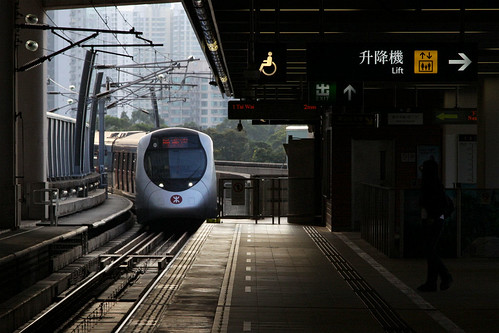


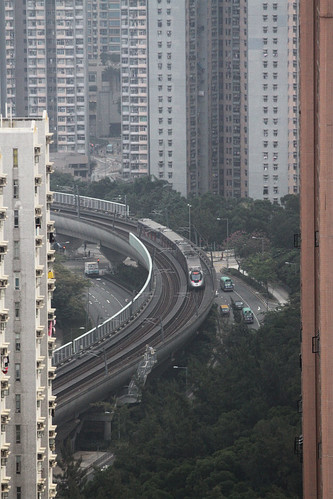
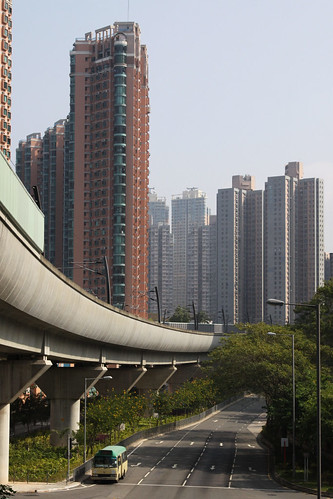


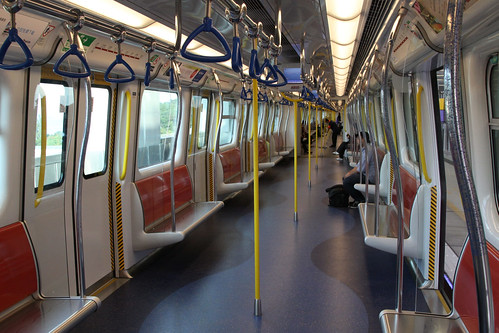


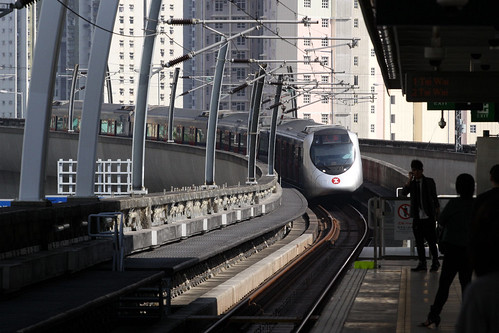

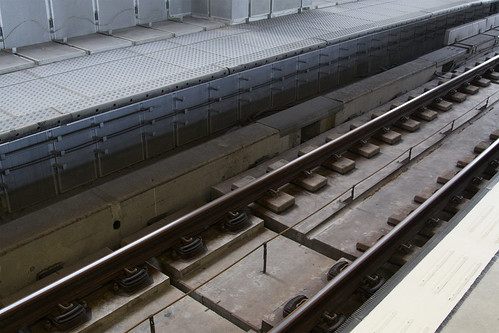
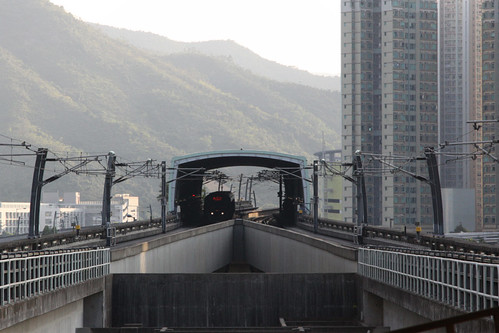
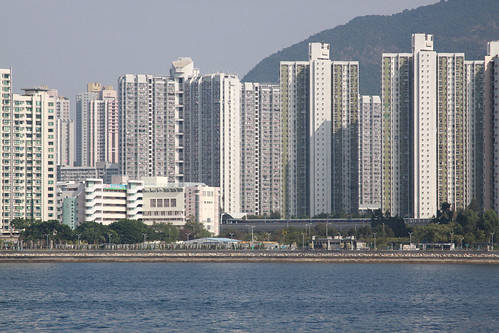


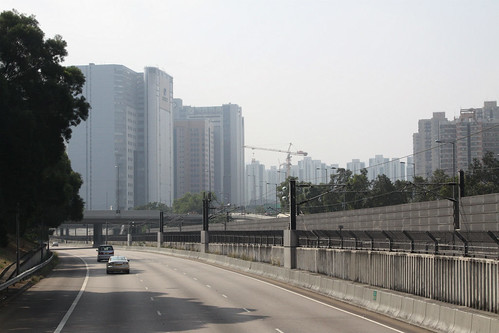
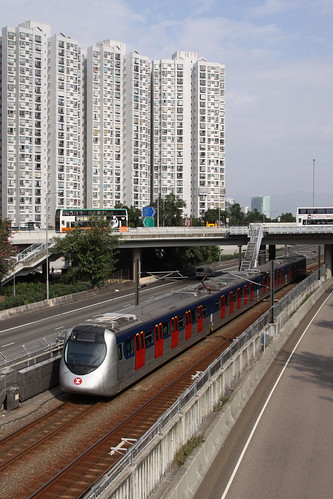
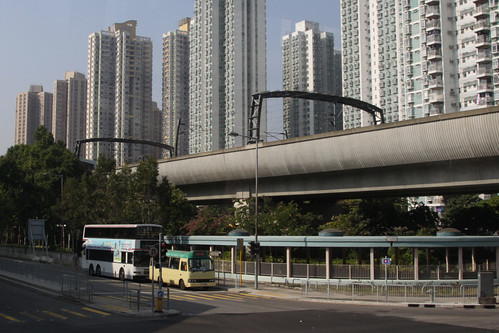
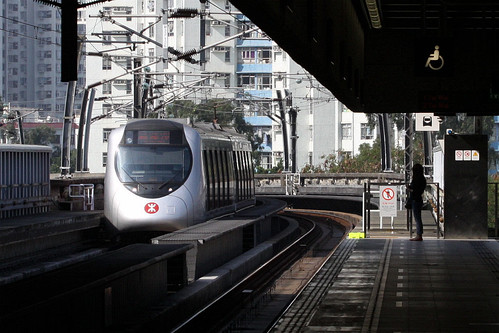
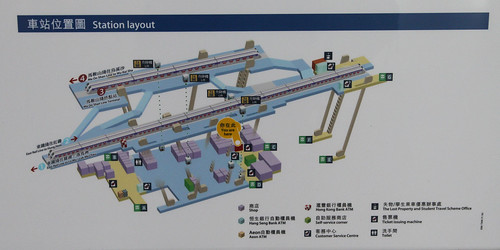
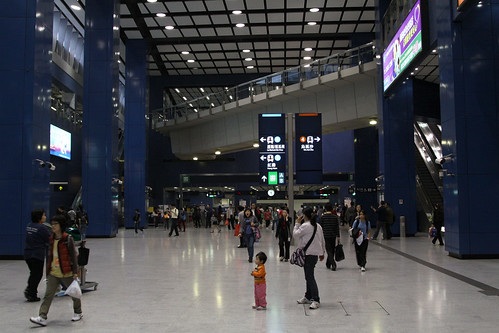
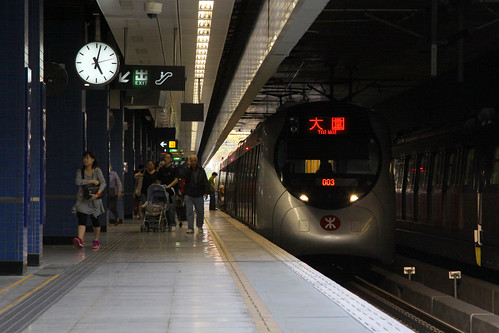
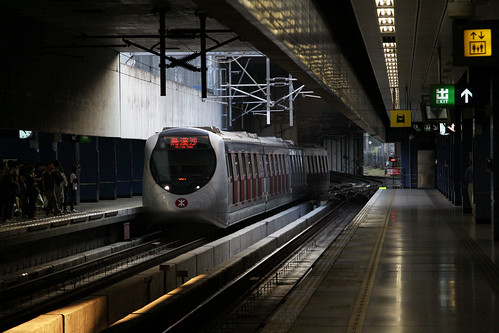


Pingback: MTR East Rail Line: a lineside guide | Checkerboard Hill
Pingback: The sound of silence? | Checkerboard Hill
Pingback: Swapping left and right on the Tuen Ma Line - Checkerboard Hill